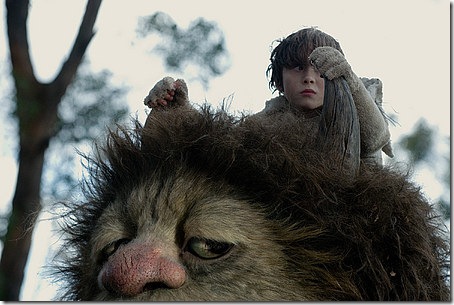For a story set largely inside a young boy’s imagination, Where the Wild Things Are does a remarkable job of planting the viewer in the boy’s head.
Using unhinged, handheld camerawork and an inordinate number of point-of-view shots, director Spike Jonze presents a compelling prologue of a boy with a loving home who nonetheless seeks solace in isolation, donning a wolf costume and preferring the company of the family dog to his harried single mother and teenage sister.
The movie’s opening stanzas are a series of minor calamities that come off as major catastrophes when shot through young Max’s (Max Records) viewpoint: His sister’s ruffian friends destroy his newly built igloo, he destroys a family memento in return and he causes a ruckus on the dining room table when his mom (Catherine Keener) pays more attention to her boyfriend (a blink-and-you-miss-him Mark Ruffalo) than to him.
These events, coupled with the unappealing prospect of having to eat – ick! – frozen corn for dinner, lead to the frustrated Max’s imaginary voyage across storm-laden seas, up treacherous, jagged mountains and into a shadowy forest, where he lords over a commune of impressionable gremlins with authority, anger and relationship issues.
While it would be unfair to suggest that this is when the story falls apart, suffice it to say that by this point Where the Wild Things Are has already reached its creative peak, found in the lovely moment at home when Max’s mom transcribes her son’s story about a vampire ostracized from his clan when he loses his fangs. The scene works as an understanding of the way Max sees himself and as an insightful peek into his fear of abandonment, as well as a look at the way his mom fosters his creativity.
The rest of the movie – the hour-plus plunge into the woods of Max’s mind – plants only the seedlings of this kind of depth. There are moments in Jonze’s mostly lugubrious vision that could have trumped the simplicity of the 1963 Maurice Sendak picture book on which it’s based, but they only come off as unrealized additions, rickety ships of ideas without anchors. Intolerance, fear of the Other, the worship of false idols, the emotional and physical disguises we all don – these themes are all fleetingly introduced, then discarded just as quickly in the Jonze- and Dave Eggers-written screenplay.
If only its scattershot thematic landscape could match its skillfully designed visual one. Sendak hand-picked Jonze to direct the film because of his love for Being John Malkovich, and the director paints his fantastical setting with that film’s same muted color palette of dark blues and blacks. While the film is, unfortunately, not totally devoid of CGI, most of the movie magic is pleasingly retro, utilizing a combination of animatronics and suitmation, a rubber-suit technique originally used in Japan’s Godzilla movies.
The soundtrack, by the Yeah Yeah Yeahs’ Karen O, drifts in and out with melodious, buy-it-at-Wal-Mart restraint, and the voice actors (James Gandolfini, Chris Cooper, Catherine O’Hara and Lauren Ambrose among them) raise a few eyebrows without calling too much attention to themselves and their real-life personae.
Of course, these are just the bells and whistles of studio filmmaking, thoroughly accomplished. But in the age of Pixar, just being a well-made children’s movie isn’t enough. Perhaps Where the Wild Things Are is a fine adaptation of Sendak’s story; the author himself has heaped glowing praise upon it. But after watching a 10-sentence book adapt into a feature-length script, it’s clear Jonze’s film could have been a lot more.
John Thomason is a freelance writer based in South Florida.
WHERE THE WILD THINGS ARE. Studio: Warner Brothers; Director: Spike Jonze; Cast: Max Records, Catherine Keener, voices of James Gandolfini, Forest Whitaker, Chris Cooper, Lauren Ambrose, Catherine O’Hara and Paul Dano; Rated: PG; Opens: Friday; Venue: Most commercial houses
